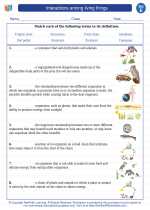Interactions Among Living Things
Interactions among living things refer to the relationships and connections that exist between different organisms in an ecosystem. These interactions can be classified into three main categories: competition, predation, and mutualism.
Competition
Competition occurs when two or more organisms in an ecosystem compete for the same resources, such as food, water, or shelter. This can lead to a struggle for survival, as organisms must compete to meet their basic needs. For example, plants in a forest may compete for sunlight, leading to taller trees shading smaller plants below.
Predation
Predation is the act of one organism (the predator) hunting, killing, and consuming another organism (the prey) for food. This interaction is essential for maintaining the balance of populations within an ecosystem. For instance, a lion hunting and feeding on a zebra is an example of predation in the African savanna.
Mutualism
Mutualism is a type of interaction where both organisms involved benefit from the relationship. This can take the form of a symbiotic relationship, where each organism provides something the other needs. An example of mutualism is the relationship between bees and flowers, where bees pollinate the flowers in exchange for nectar.
Study Guide
- Define the three main types of interactions among living things.
- Provide an example of competition in a specific ecosystem.
- Describe the predator-prey relationship and its importance in maintaining ecosystem balance.
- Explain the concept of mutualism and provide an example of a mutualistic relationship in nature.
- Discuss how human activities can impact the interactions among living things in an ecosystem.
- Compare and contrast the different types of interactions among living things, highlighting their effects on population dynamics.
◂Science Worksheets and Study Guides Fifth Grade. Interactions among living things
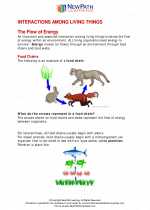
 Worksheet/Answer key
Worksheet/Answer key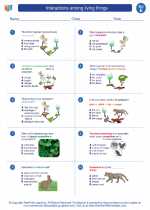
 Worksheet/Answer key
Worksheet/Answer key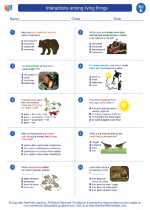
 Worksheet/Answer key
Worksheet/Answer key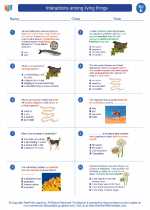
 Vocabulary/Answer key
Vocabulary/Answer key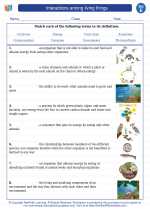
 Vocabulary/Answer key
Vocabulary/Answer key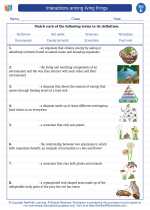
 Vocabulary/Answer key
Vocabulary/Answer key